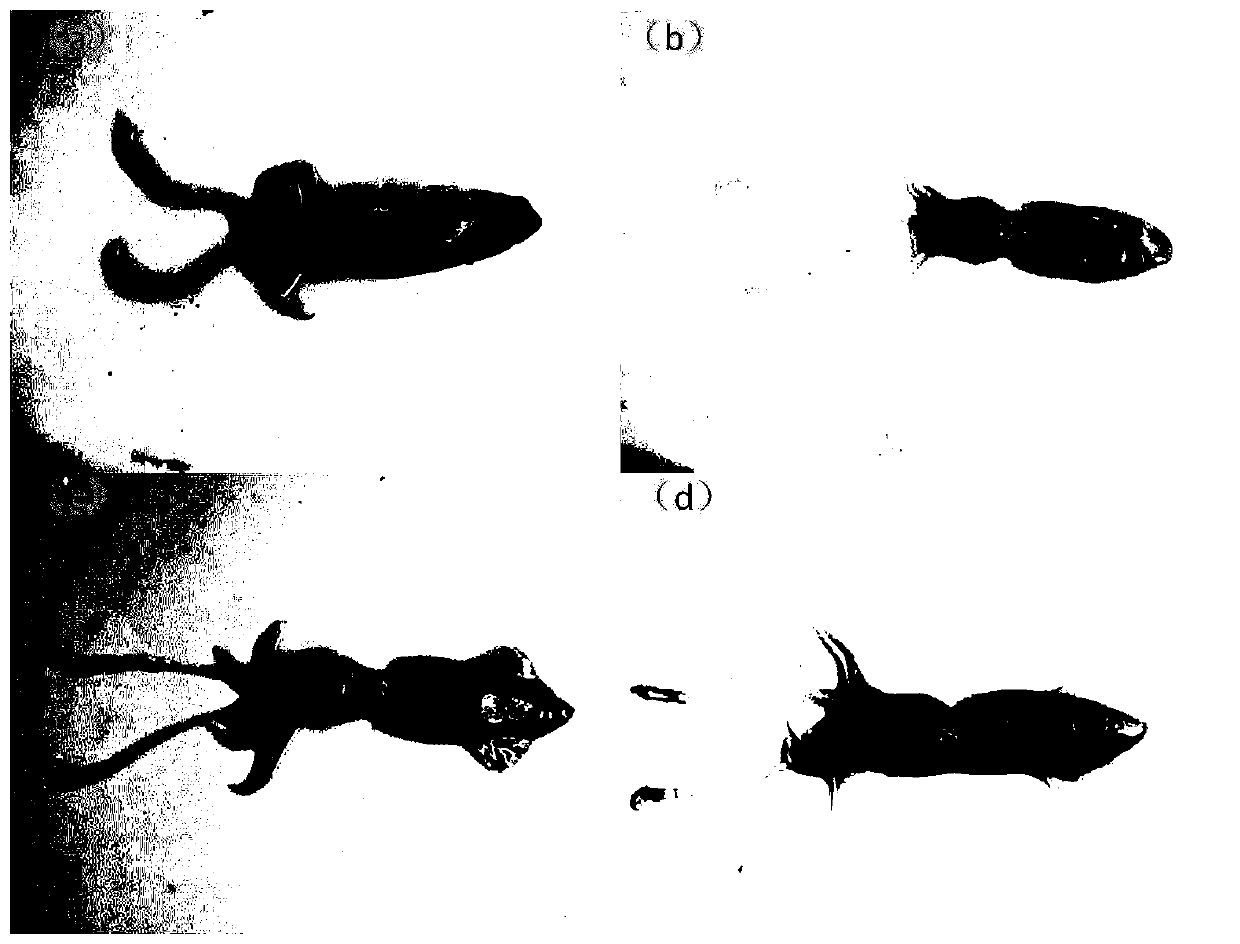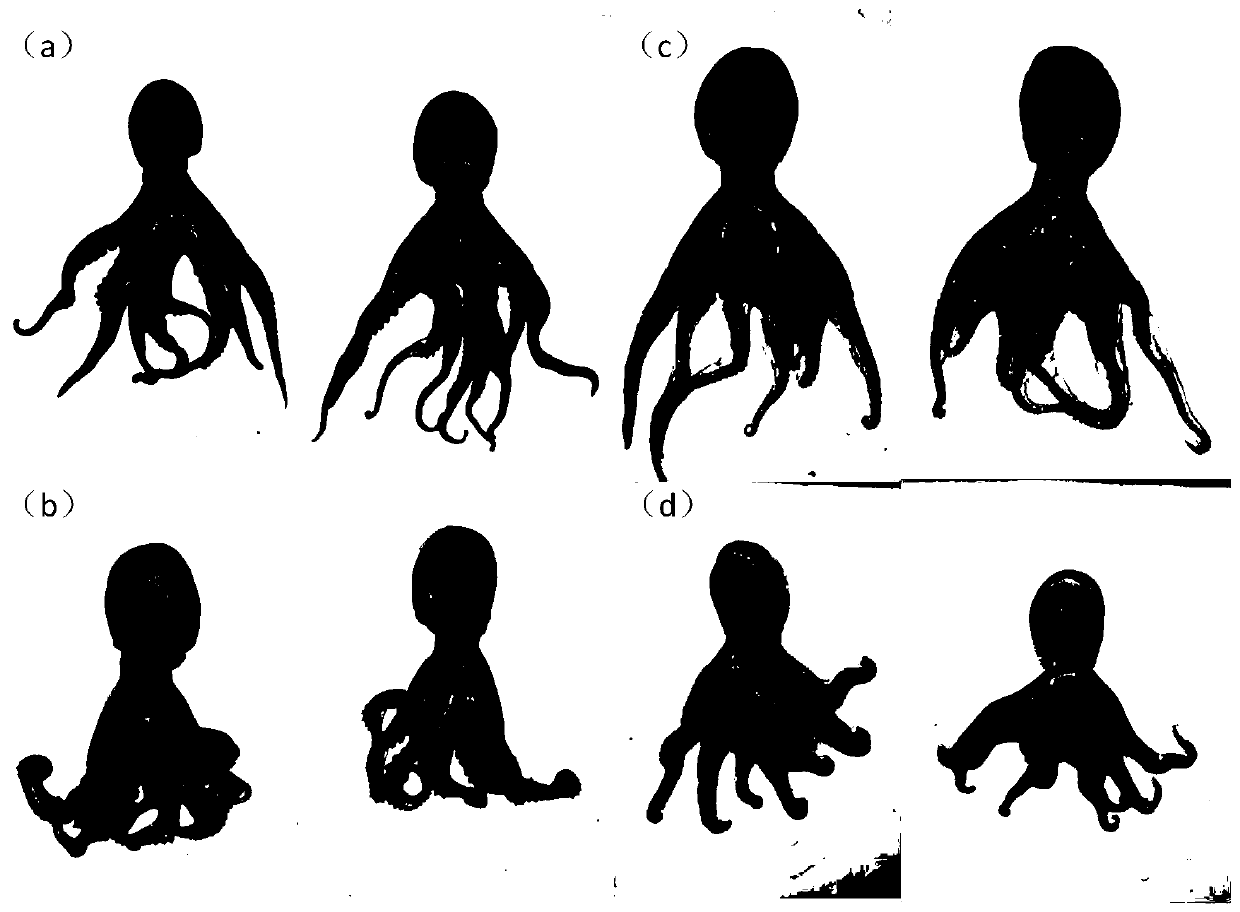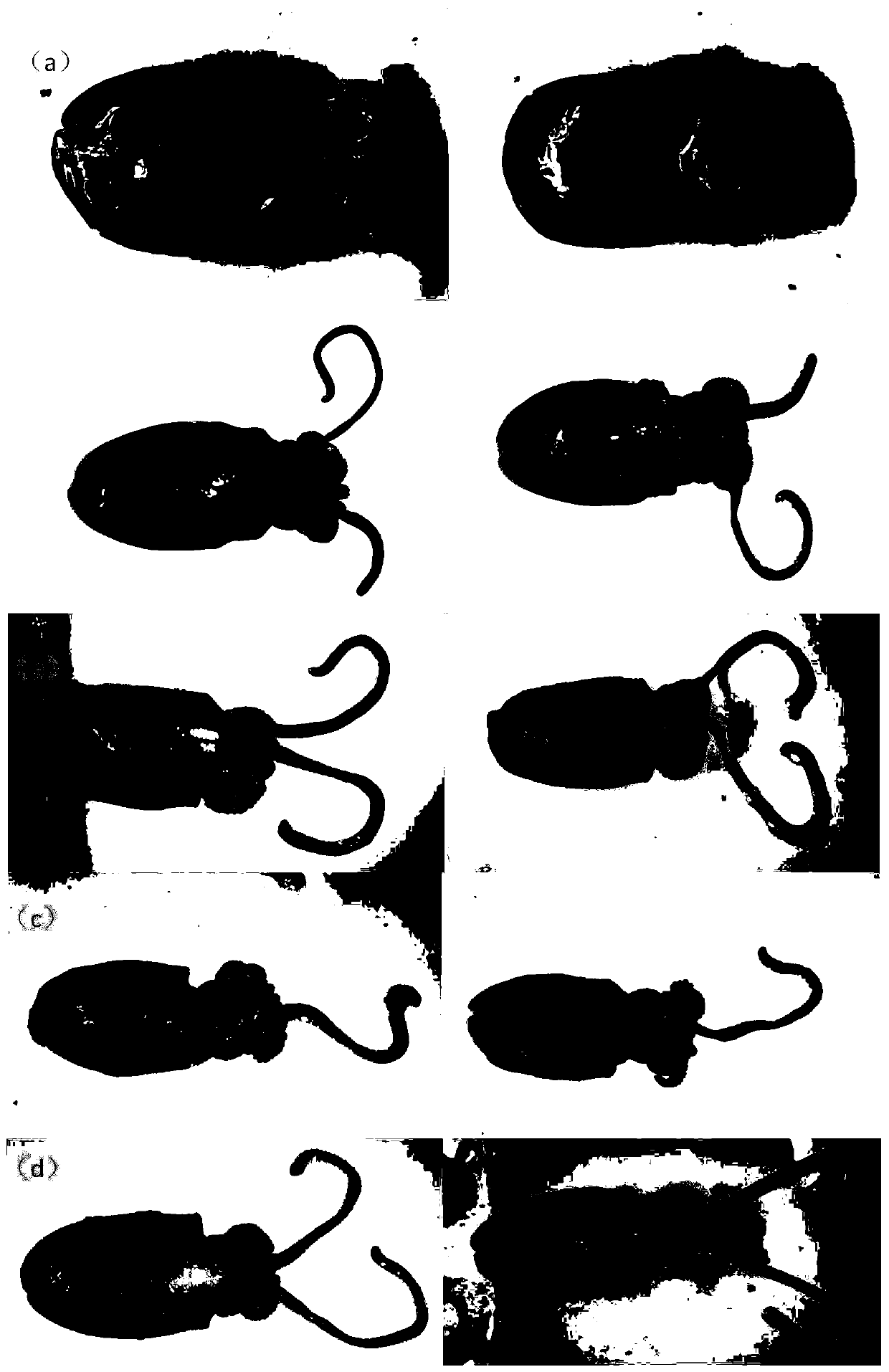Preparation method for cephalopod transparent specimens
A production method and technology of cephalopods, which are applied in the field of making transparent cephalopod specimens, can solve problems such as poor preparation of cephalopod transparent specimens, achieve beautiful specimens, and avoid dehydration and shrinkage
- Summary
- Abstract
- Description
- Claims
- Application Information
AI Technical Summary
Problems solved by technology
Method used
Image
Examples
Embodiment 1
[0048] Embodiment 1: the making of squid transparent specimen
[0049] 1. Take a fresh, complete and undamaged squid specimen (length 5-13cm). In order to prevent the ink sac from breaking and contaminating the inner structure of the squid mantle, put the squid in clear water, and use a fine needle to puncture a small hole on the ink sac , Squeeze the ink sac to squeeze out the ink. When the ink sac is not black and no ink is squeezed out from the outside, it can be considered that the ink is completely discharged.
[0050] 2. Put the squid after removing the ink into 95% alcohol for 2 days to make the specimen basically dehydrated
[0051]3. Put the specimen into 2% KOH solution to make it transparent. Soak for 1-2 days to basically dissolve the pigment on the surface of the specimen and make the specimen soft
[0052] 4. Put the specimen in the dyeing agent and soak for 2 days until the specimen is completely dyed.
[0053] The preparation methods of different dyes are as...
Embodiment 2
[0064] Embodiment 2: the making of squid transparent specimen
[0065] 1. Get a fresh squid specimen (5-15cm in length) with a complete and undamaged appearance, remove the ink sac, wash the ink, put it into 95% alcohol and fix it for 2 days, so that the specimen is basically dehydrated. After fixation, it can be observed that the alcohol solution turns yellow, a large amount of oil dissolves, and flocculent precipitation can be observed at the bottom of the solution
[0066] 2. Put the specimen into 2% KOH solution to corrode and make it transparent. Soak for 1 day, so that most of the pigment on the surface of the specimen is washed away, and at the same time, the sea shell structure of the squid can be clearly seen;
[0067] 3. Put the specimen into the dyeing agent and soak for 2 days to make the specimen completely dyed.
[0068] The preparation methods of different dyes are as follows:
[0069] Alcian blue solution: Alcian blue 1.0g, 95% alcohol solution 500ml, glacia...
Embodiment 3
[0079] Embodiment 3: the making of octopus transparent specimen
[0080] 1. Take a fresh, complete and undamaged octopus specimen (length 10-21cm) to remove the ink sac, wash the ink, put it in 95% alcohol and fix it for 2 days, so that the specimen is basically dehydrated. After fixation, it can be observed that the alcohol solution turns yellow, a large amount of oil dissolves, and a flocculent precipitate is observed at the bottom of the solution
[0081] 2. Put the specimen into 2% KOH solution to corrode and make it transparent. Soak for 3 days to remove most of the pigment on the surface of the specimen
[0082] 3. Put the specimen in Alcian blue stain and soak for 2 days to make the specimen completely stained.
[0083] The preparation methods of different dyes are as follows:
[0084] Alcian blue solution: Alcian blue 1.0g, 95% alcohol solution 500ml, glacial acetic acid 100ml, distilled water 400ml
[0085] Toluidine blue solution: 1.0g toluidine blue, 500ml 95% a...
PUM
 Login to View More
Login to View More Abstract
Description
Claims
Application Information
 Login to View More
Login to View More - R&D
- Intellectual Property
- Life Sciences
- Materials
- Tech Scout
- Unparalleled Data Quality
- Higher Quality Content
- 60% Fewer Hallucinations
Browse by: Latest US Patents, China's latest patents, Technical Efficacy Thesaurus, Application Domain, Technology Topic, Popular Technical Reports.
© 2025 PatSnap. All rights reserved.Legal|Privacy policy|Modern Slavery Act Transparency Statement|Sitemap|About US| Contact US: help@patsnap.com



